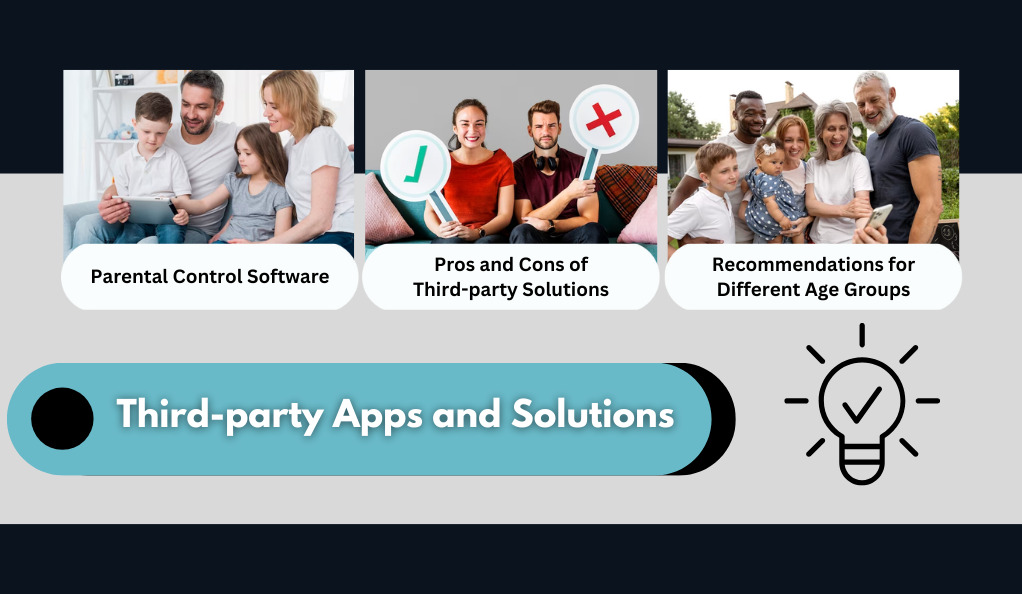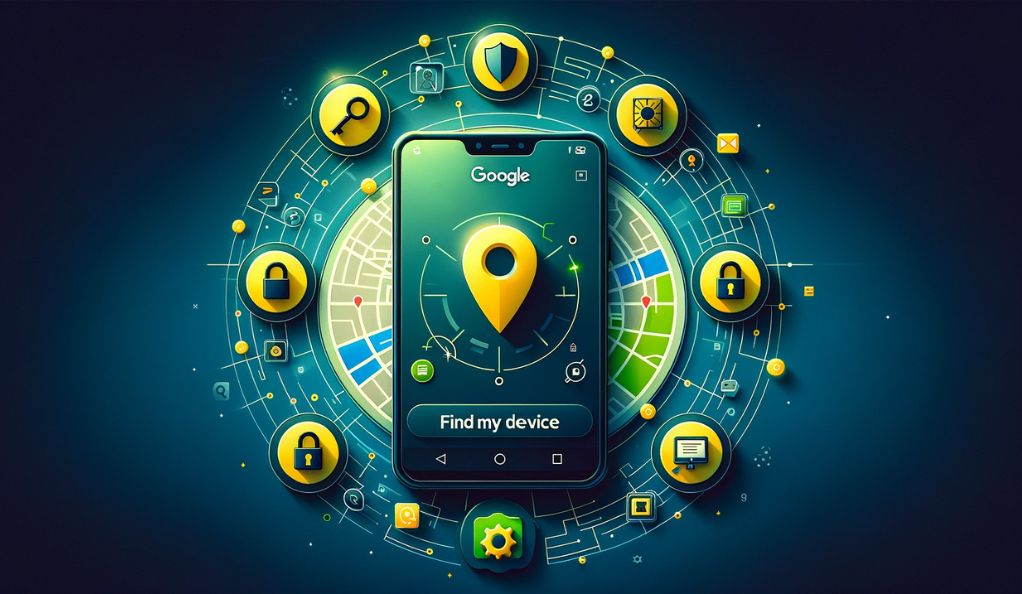In today’s digital era, smartphones and tablets have transformed from luxury items to everyday essentials. As these devices become more integrated into our lives, they also become an integral part of our children’s lives. From educational apps to interactive games, the digital world offers a plethora of opportunities for learning, entertainment, and connection. However, with these opportunities come challenges and potential risks, especially for young users.
Digital Device Usage Among Children
| Age Group | Average Screen Time Per Day | Most Commonly Used Apps |
|---|---|---|
| 2-4 years | 2 hours | Educational games, Video streaming |
| 5-8 years | 2.5 hours | Learning apps, Social games, Video streaming |
| 9-12 years | 3 hours | Social media, Multiplayer games, E-books |
| 13-18 years | 4.5 hours | Social media, Streaming services, Online studies |
The importance of proactive parenting in the digital age cannot be overstated. As the table above highlights, even toddlers are spending significant time on digital devices. While this isn’t inherently harmful, it underscores the need for parents to be vigilant, informed, and prepared.
Parental controls have evolved from simple content filters to sophisticated tools that monitor usage, set time limits, and even track physical locations. But why are these tools essential?
- Inappropriate Content: The vastness of the internet means children might inadvertently stumble upon content that’s not age-appropriate or even harmful.
- Online Interactions: With social media and multiplayer games, children are interacting with peers and strangers alike. This opens the door to potential cyberbullying or unwanted attention.
- Screen Addiction: It’s easy to lose track of time when engrossed in a captivating game or video. Overexposure can lead to decreased physical activity, disrupted sleep patterns, and other health issues.
Understanding the Digital Threats

In an age where information is constantly at our fingertips, the digital realm can be both a treasure trove of knowledge and a minefield of dangers. To effectively protect our children, it’s imperative that parents first grasp the nature and scope of these threats. Here’s a deeper dive into the challenges mentioned in the introduction:
Exposure to Inappropriate Content
The internet is vast, and not all its corners are child-friendly. From explicit content to extremist ideologies, the web houses a myriad of materials unsuitable for young minds.
Common Online Threats and Their Potential Impact
| Threat | Description | Potential Impact on Children |
|---|---|---|
| Explicit Content | Material of a sexual, violent, or graphic nature. | Emotional distress, skewed perspectives on relationships and self-worth. |
| Misinformation & Fake News | False information presented as facts. | Misinformed opinions, distrust in authentic sources. |
| Extremist Content | Radical ideologies that promote hate or violence. | Radicalization, intolerance, and isolation from peers. |
Online Predators and Cyberbullying
Social platforms, while fostering connection, can also be a breeding ground for harmful interactions. Online predators often disguise themselves, aiming to exploit the innocence of younger users. Simultaneously, cyberbullying has emerged as a modern-day menace, with detrimental effects on a child’s mental well-being.
Key Statistics:
- 1 in 4 children has reported being bullied online.
- Over 60% of teens have been contacted by strangers online.
- Only 20% of cyberbullying incidents are reported to law enforcement.
Privacy Breaches and Data Theft
Children might not be aware of the significance of personal information, making them prime targets for hackers and scammers. Sharing seemingly harmless details, like their school name or pet’s name, can lead to identity theft or even physical threats.
Safety Tips:
- Educate your child about never sharing personal details online.
- Regularly review app permissions on your child’s device.
- Use strong, unique passwords for online accounts and enable two-factor authentication where possible.
Digital Addiction and Screen Time
The allure of the digital world can be strong. Games, videos, and social platforms are designed to capture attention, often leading to excessive screen time. This can result in poor sleep, decreased physical activity, and even vision problems.
Signs of Digital Addiction in Children:
- Decline in academic performance.
- Irritability when away from devices.
- Preference for digital interaction over real-world activities.
As we navigate this digital era, awareness of these threats is half the battle. The next sections will provide tangible solutions and tools to address these challenges head-on, ensuring a safe digital environment for our children.
Built-in Parental Controls in Popular Mobile OS
Modern mobile operating systems recognize the need for child safety and have incorporated built-in parental controls to empower parents. Let’s take a closer look at the features offered by iOS and Android, two of the most prevalent mobile OS in the market.
iOS Screen Time
Apple’s Screen Time offers a comprehensive suite of tools for monitoring and managing device use.
Comparison Between iOS Screen Time and Android’s Digital Wellbeing
| Feature | iOS Screen Time | Android’s Digital Wellbeing |
|---|---|---|
| Screen Time Monitoring | Yes | Yes |
| App Limit Setting | Yes | Yes |
| Content Restrictions | Yes | Yes (via Family Link) |
| Focus/ Downtime Mode | Downtime | Focus Mode |
| Activity Reports | Detailed reports | Basic overview via dashboard |
While both iOS and Android offer robust tools for parental control, the best approach depends on the individual needs of each family. It’s crucial to regularly review and adjust settings to ensure they remain effective as your child grows and their online habits evolve.
In the next section, we’ll explore third-party apps and solutions that can offer additional layers of protection, especially for parents looking for more granular controls or those whose children use devices across different platforms.
Third-party Apps and Solutions

While built-in parental controls are a great starting point, third-party solutions can provide a more comprehensive and cross-platform approach to digital safety. These tools often come with advanced features tailored to give parents greater insight and control over their children’s online activities.
Popular Parental Control Software
Qustodio
- Features: Screen time limits, social media monitoring, real-time location tracking, and panic button for emergencies.
- Platforms: Windows, macOS, Android, iOS, and Kindle.
- Pricing: Free basic version available; premium plans offer additional features.
Net Nanny
- Features: Dynamic content filtering, screen time management, profanity masking, and app blocking.
- Platforms: Windows, macOS, Android, iOS, and Kindle Fire.
- Pricing: Plans vary based on the number of devices covered.
Bark
- Features: Monitors texts, emails, and over 30 social networks for signs of harmful interactions such as cyberbullying or online predators. Provides alerts to parents.
- Platforms: Android, iOS.
- Pricing: Monthly subscription required.
Norton Family
- Features: Web supervision, time supervision, search supervision, and instant lock.
- Platforms: Windows, Android, iOS.
- Pricing: Annual subscription with a 30-day free trial.
Pros and Cons of Third-party Solutions
Pros:
- Cross-platform Compatibility: Many third-party tools work across different devices and platforms, making it easier for parents to manage controls consistently.
- Granular Controls: Offers more detailed and specific features than built-in controls.
- Regular Updates: Third-party developers often roll out updates and new features based on emerging digital threats.
Cons:
- Cost: While many offer free versions, the most comprehensive features often come at a price.
- Compatibility Issues: Some apps may not work seamlessly on all devices or with all software versions.
- Over-reliance: Relying solely on these tools without open communication can lead to a false sense of security.
Recommendations for Different Age Groups
For Younger Children (2-8 years):
- Focus on setting time limits and content filters.
- Prioritize tools that offer location tracking for added safety.
For Tweens (9-12 years):
- Introduce social media monitoring as they begin to explore online communities.
- Continue with content filters, adjusting them to be age-appropriate.
For Teens (13-18 years):
- Emphasize open communication about their online activities.
- Consider monitoring tools that provide insights without infringing on their privacy.
Educating Your Child About Safe Mobile Usage
In today’s interconnected world, it’s more important than ever to educate our children about the safe usage of mobile devices. These handheld portals to the internet offer endless opportunities for learning and entertainment, but they also come with potential risks that every young user should be aware of.
A fundamental aspect of this education is the importance of open communication about online dangers. Children should feel comfortable discussing their online experiences, questions, and concerns with their parents. When families maintain an open dialogue about the potential hazards of the online world, from cyberbullying to inappropriate content, it fosters a sense of trust. This trust ensures that children will come forward when they encounter something unfamiliar or unsettling, rather than trying to navigate it alone.
Equally crucial is teaching kids to recognize and report suspicious activities. This involves helping them identify the red flags of potentially harmful interactions, such as unsolicited friend requests, messages that make them uncomfortable, or links that seem out of place. By arming them with this knowledge, they become more proactive in safeguarding their online space. Furthermore, they should know the appropriate steps to take when they spot these red flags, whether it’s reporting a user on a platform or discussing it with a trusted adult.
Lastly, while mobile devices are a significant part of modern life, encouraging responsible and limited screen time is essential for a child’s overall well-being. Setting boundaries, such as designated tech-free times or encouraging offline hobbies, can help strike a balance. When children understand the value of disconnecting and engaging with the world around them, it promotes a healthier relationship with technology and ensures a more holistic development.
The Balance: Privacy vs. Protection

In the era of digital interconnectedness, a pivotal concern for parents is finding the equilibrium between privacy and protection. This balance is not just about using technology to monitor and guide but also about understanding the evolving needs and independence of a growing child.
Respecting Your Child’s Independence and Privacy
Children, as they grow, naturally seek autonomy and a sense of personal space, both offline and online. Recognizing this need is essential for nurturing trust and self-confidence. While it’s tempting to oversee every digital interaction, it’s vital to give them room to explore, make mistakes, and learn. By doing so, we not only show respect for their burgeoning independence but also empower them to develop their own judgment and digital resilience.
Knowing When to Intervene and When to Trust
However, this respect for privacy doesn’t mean turning a blind eye. There are moments when parental intervention becomes necessary, especially when tangible threats emerge. The key lies in discerning between typical teenage behavior and signs of potential distress or danger. Trust is crucial, but it should be complemented with open dialogue. Encouraging children to share their online experiences, both the good and the challenging, ensures that parents can step in when truly needed, and stand back when it’s time to let them navigate on their own.
Future of Parental Controls: What’s Next?
The rapid evolution of technology guarantees that the digital landscape our children navigate today will differ significantly from what they’ll encounter in the coming years. With innovations such as augmented reality, virtual reality, and the Internet of Things (IoT) becoming more integrated into our daily lives, the future of parental controls must also adapt and evolve.
Evolving Digital Threats and the Rise of Smart Devices
IoT and Connected Homes: As our homes become smarter with connected devices ranging from fridges to light bulbs, new avenues for potential risks emerge. Cybersecurity for these devices will become paramount.
Augmented and Virtual Realities: The blending of the digital and physical world, through technologies like AR and VR, will offer immersive experiences. However, they’ll also introduce unique challenges in monitoring and controlling content.
Upcoming Innovations in Parental Control Technology
Artificial Intelligence and Machine Learning: Advanced algorithms will predict and prevent threats before they materialize, offering real-time protection. For instance, AI could analyze patterns to detect unsolicited approaches by online predators.
Blockchain for Digital Identity: Blockchain technology might play a role in safeguarding digital identities, ensuring that personal data remains secure and unalterable.
Context-Aware Controls: Parental controls could become more intuitive, adjusting restrictions based on context. For example, a device might recognize when a child is at school and restrict game access, but allow educational apps.
The Role of AI and Machine Learning in Child Protection
Artificial Intelligence (AI) and Machine Learning (ML) will play pivotal roles in shaping the future of parental controls:
Personalized Safety Protocols: ML algorithms can learn from a child’s online behavior and adjust safety protocols to fit their unique needs.
Proactive Threat Detection: AI can actively scan the web for emerging threats or harmful trends and update parental control measures accordingly.
Improved Content Filters: AI-driven content filters will be more accurate, ensuring that inappropriate content is blocked while reducing false positives.
In essence, the future of parental controls is one of dynamic adaptability. As our digital world expands and transforms, the tools we use to protect our children will become more advanced, intuitive, and effective.
Conclusion
In the dynamic landscape of the digital age, parents face the dual challenge of leveraging technology’s benefits for their children while safeguarding them from its pitfalls. The myriad of tools available, from built-in parental controls to sophisticated third-party solutions, are invaluable. However, the essence of digital safety lies in open communication, education, and mutual trust. As technology evolves, so must our approach to parenting, striking a delicate balance between protection and privacy.
The future promises innovations like AI and machine learning, which will further bolster our protective measures. Yet, amidst these advancements, the fundamental role of parents as guides and guardians remains paramount. As we navigate this digital frontier, our commitment to understanding, adaptability, and our children’s well-being will pave the way for a safe and enriching online experience.








